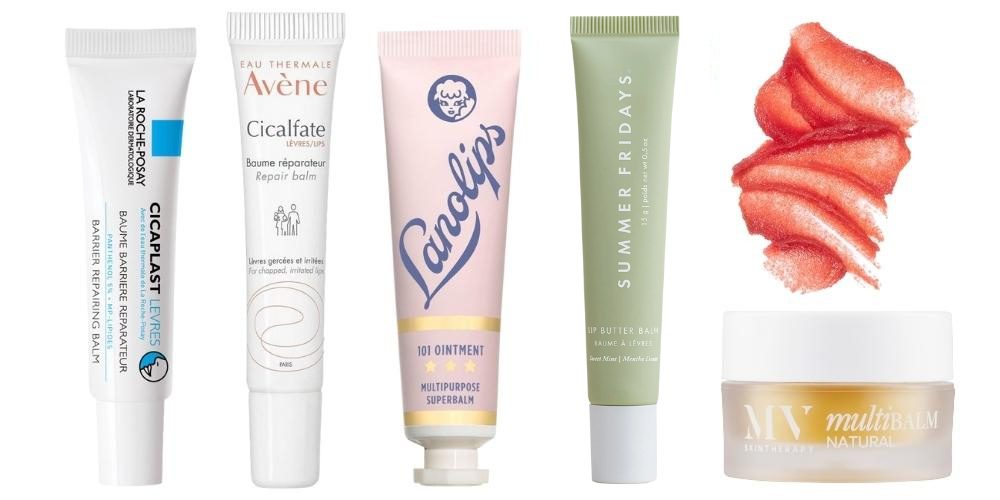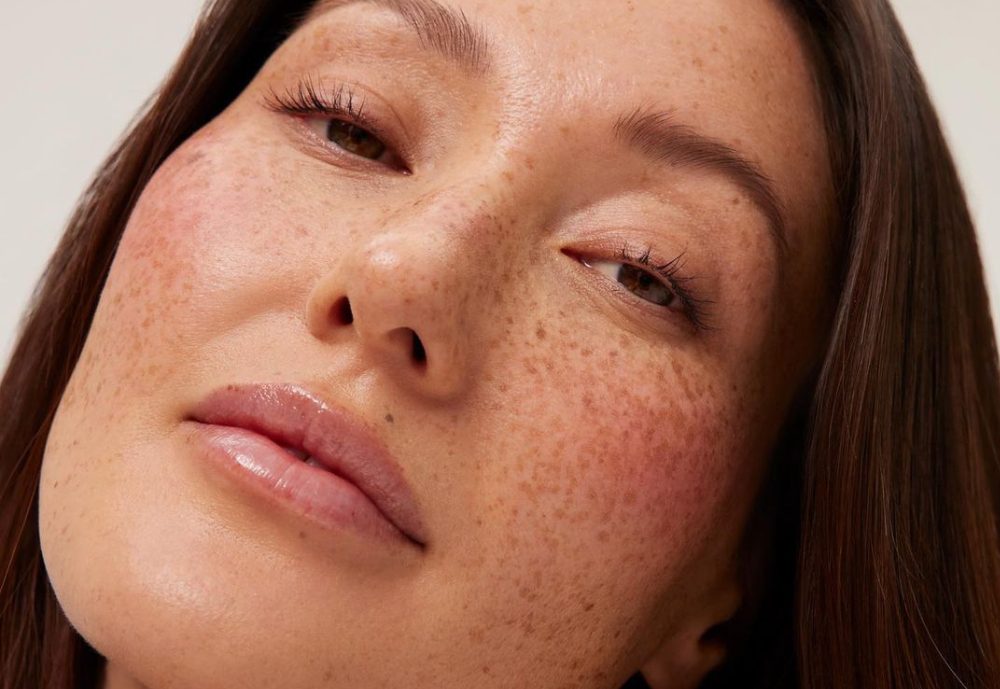One of the season’s most repetitive habits – a swipe of lip balm – is also one of the most difficult to avoid if you are prone to dry, flaky lips.
Could you go a day in the office or at the beach without anything to put on your lips? If the thought makes you shudder, and you’re now licking your lips, you’re not alone. Applying – and then re-applying – lip balm is intended to help keep the area soft and supple but there are some key considerations around which products to use so you don’t unintentionally exacerbate the issue.
Can you be addicted to lip balm?
Skin experts and psychologists have both addressed the idea of lip balm addiction.
The former claim some balms contain irritants that can actually dry out your lips, creating a cycle of dryness that can trigger reapplication in order to temporarily soothe the uncomfortable sensation. The latter have pointed out the issue can start like that but given the products have no ingredients that can cause a physiological dependency, the urge to reapply can actually be a form of compulsive behaviour that can be difficult to control, regardless of what’s in the product at hand.
Excessive repetitive habits, no matter what they are, generally need professional help to address, and the number of online forums dedicated to the topic suggest a focus on lip balm reuse isn’t unheard of.
Delicate care necessary
In terms of needing specific care, lips are particularly susceptible to irritation and dryness because of their delicate nature, when compared with other areas of the face.
“There are some similarities in terms of structure,” explains L’Oreal NZ’s Active Cosmetics Division Medical Representative Marion Kowalski.
“Both the face and lips are composed of the same layers: stratum corneum, epidermis and dermis. However, the difference between the skin of the lips and the face is that the stratum corneum, which is the protective cover of our epidermis (the top layer of our skin) is far thinner on the lip area than anywhere else on our body and therefore less protective and more fragile.”
She also points out there are no sebaceous glands to keep the lips moisturized.
“Without these oil glands, lips don’t produce any natural oils such as sebum like the rest of the face does. It explains why our lips can easily become dry and chapped quicker than our facial skin and some people need constant rehydration in this area.
“Another difference is lack of melanin. This helps protect our skin from ultraviolet rays, and isn’t present in the lips therefore increasing the risk of sunburn in this area.“ Therefore, use of a balm with SPF is highly recommended, particularly in times of prolonged sun exposure.

Top lip balms to try: La Roche-Posay Cicaplast Lips Barrier Repairing Balm; Avène Cicalfate Lips Restorative Lip Balm; Lanolips 101 Ointment Multipurpose Superbalm; Summer Fridays Lip Butter Balm; MAC Lip Scrubtious Lip Scrub; MV Skintherapy Multi-balm
Causes of dry lips
It’s just one indication of an environmental factor – the sun – that can dry and damage lips although cold temperatures, wind and dry air can also wreak havoc on your lips, and can lead to chapping, cracking, peeling and even bleeding. However, somewhat infuriatingly, the weather can sometimes simply be an aggravating factor among a long list of potential causes and irritants that sometimes even leave experts stumped.
Many factors can cause skin dryness, says Kowalski, listing allergies, medication, dermatitis, dehydration and change of temperatures.
“Lip dryness is also a common side effect of not drinking enough water and people who have the habit of licking their lips may find it actually dries them more, as saliva contains an enzyme that removes moisture upon drying.
As a repetitive habit it can lead to cheilitis – a form of dermatitis of the lips – although variations of cheilitis can also be caused by allergens and irritants as varied as toothpaste, fragrance in lip products and food ingredients.
Another confusing factor is that some people are sensitive to menthol or camphor included in many balms to deliver an appealing cooling or tingling sensation but in a tricky cycle, can lead to dryness.
Soothing solutions
A straightforward pocket-sized tube of waxy balm may do the trick for some, particularly if you’re out and about in the elements, but there’s a difference between products that moisturise the skin on your lips and those that form a barrier to prevent moisture loss and protect from wind or cold.
“Just because you hydrate the area, doesn’t mean it will stay hydrated,” says Kowalski.
“Some ingredients are natural hydrators and others will help form a protective barrier.“
To explain the differences, she says ingredients in skincare, and particular in lip care, can fit into three categories: emollients, humectants and occlusives.
“Emollients hydrate and soften the skin, humectants hold the moisture in the skin and the occlusives seal the hydration in and keep it from evaporating.”
Emollients include oils, esters, lipids, fatty acids and ceramides, like shea butter and cocoa butter in lip balms. Glycerin, hyaluronic acid, and aloe vera are considered as humectants and occlusives include silicone, dimethicone, petrolatum or mineral oil and waxes.
Kowalski advises looking for a lip balm with a combination of each category that’s healing and hydrating, can keep moisture in and protect lips from environmental conditions. She suggests La Roche Posay Cicaplast Levres Lip Balm, saying it works well because it’s designed to moisturise, repair and protect dry, chapped and cracked lips for even the most sensitive skin.
Kirsten Carriol, founder of Lanolips, a popular lanolin-based skincare brand, says the natural oil found on sheep’s wool is an ideal ingredient for lips as it’s similarly multitasking.
“I spent a lot of my childhood on my grandparents’ sheep farm in South Australia where my siblings and I would play in the shearing shed, watching the shearers do their work. Lanolin was all around me, we could feel the lanolin over all of the surfaces of the shed and the shearer’s hands were unbelievably soft, even after a day of work. We would always use lanolin on our dry noses and lips, especially in winter.”
She established her brand on that basis and now has a wide range of lip, face and body care formulated with pure medical-grade lanolin.
“Lanolin is a 100% natural super hydrator that can treat extremely dry and irritated skin. This miracle ingredient holds double its weight in moisture and acts as a moisture reservoir and barrier at the same time. My father is a professor of genetics, and he always said the molecular structure of lanolin most closely resembles your own skin lipids.”
If you are experiencing issues and no products seem to improve the condition of your lips, a dermatologist’s advice will help confirm the best approach.
New lip balm hybrids
The appeal of lip balm has grown significantly in recent years as new formulas evolve into ever more glossy incarnations including lip oils, as well as lip treatment products as new ingredients arise.
Hailey Beiber has helps popularise the blend of smoothing and plumping peptides combined with balm ingredients and a sheer coloured tint in her brand Rhode’s Peptide Lip Treatment.
Summer Fridays Lip Butter Balm similarly combines nourishing ingredients with sheer on-trend shades.
Social media has also prompted the rise of overnight ‘lip masks’, that promise more intensice, longer-lasting treatments.
One of the most beloved is K Beauty brand Laneige’s Lip Sleeping Masks, now available in a range of flavours – not that you’re supposed to lick them! Intended to deliver long-lasting hydration, the mask is enriched with vitamin C and antioxidants from a blend of berries to smooth away dead skin cells, keep lips youthful and soothe dry lips. Mineral water, evening primrose root extract and Hunza apricot extract are used for moisture. The brand developed the mask to be worn at night so users could avoid the hassle of wearing lip balm, as well as those who wanted to return hydration after a day wearing lipstick.
While some treatments are suggested for use at night, there is no reason each of the serums, treatments or masks can’t be used during the day. With a sometimes thicker balm or slippery serum, texture they aren’t recommended for use under lip colour products, however.
Image (top): Summer Fridays







